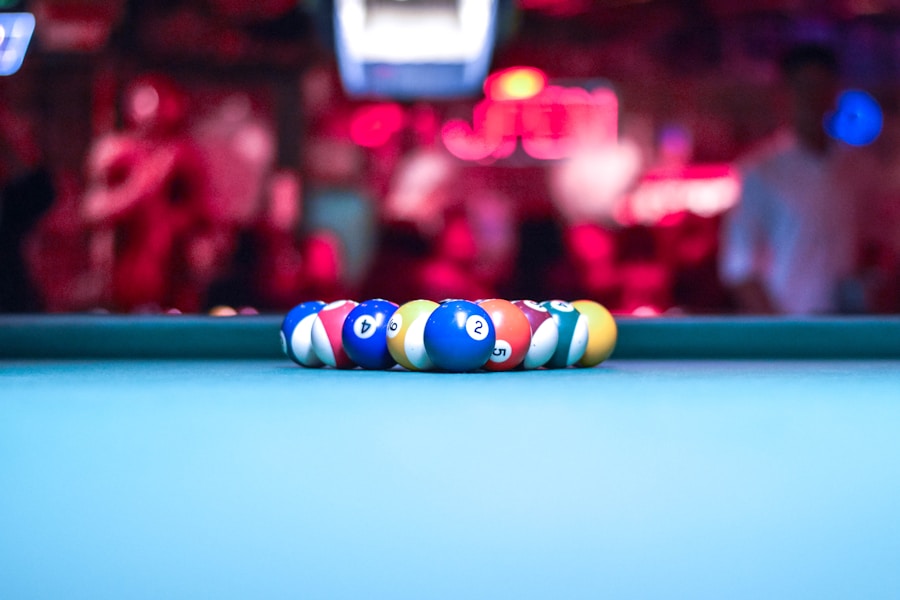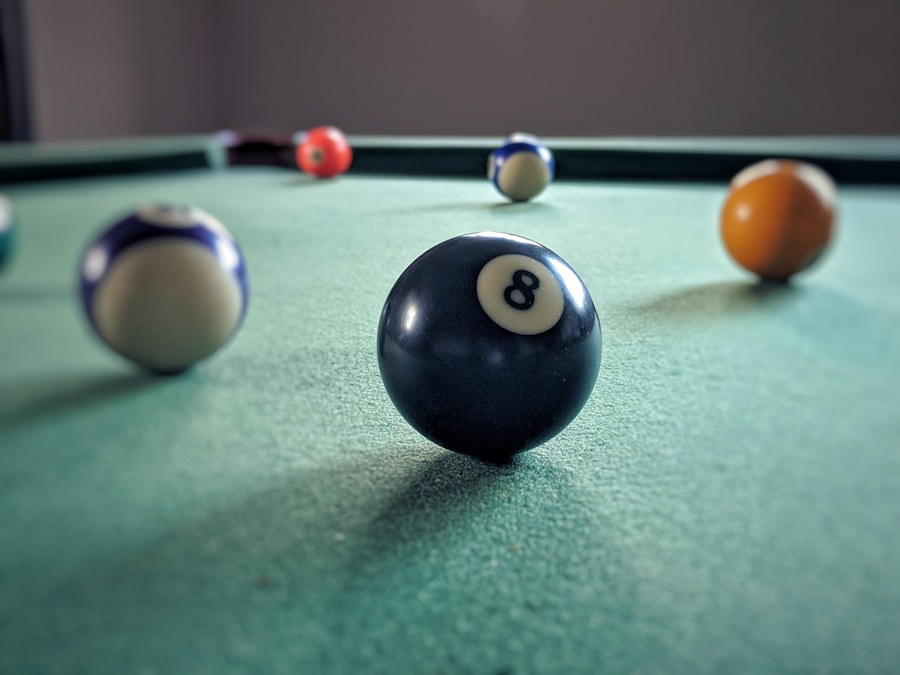Download links
How to install Mastering the Snake 8 Ball Pool: Tips and Tricks APK?
1. Tap the downloaded Mastering the Snake 8 Ball Pool: Tips and Tricks APK file.
2. Touch install.
3. Follow the steps on the screen.
Description
8 Ball Pool is a classic cue sport that has captivated players around the world for generations. The game is played on a rectangular table with six pockets, using a set of 16 balls: one cue ball and 15 object balls, which are divided into two groups—stripes and solids.
The game begins with a break shot, where the player strikes the cue ball to disperse the object balls across the table. Understanding the rules and nuances of 8 Ball Pool is essential for any aspiring player, as it lays the foundation for more advanced techniques and strategies. The rules of 8 Ball Pool are relatively simple, but they can vary slightly depending on local or tournament regulations.
Generally, after the break, players must choose either stripes or solids based on which type of ball they legally pocket first. A player continues their turn as long as they successfully pocket their designated balls. However, if they fail to do so, their turn ends, and the opponent takes their shot.
Fouls can occur in various situations, such as failing to hit an object ball or sending the cue ball into a pocket. Understanding these basic rules is crucial for maintaining the flow of the game and ensuring fair play. Additionally, players should familiarize themselves with common terminology, such as “cue ball,” “object ball,” “scratch,” and “foul,” to communicate effectively during matches.
Key Takeaways
- Understanding the basics of 8 Ball Pool is crucial for beginners to grasp the rules and mechanics of the game.
- Mastering the art of positioning involves learning how to plan and execute shots to set up the next move.
- Developing advanced cue ball control is essential for precision and accuracy in hitting the target ball.
- Learning the importance of strategy is key to outmaneuvering opponents and setting up winning shots.
- Utilizing bank shots and carom shots can give players an edge in difficult situations and open up new possibilities for winning moves.
- Perfecting your break shot is essential for gaining an advantage at the start of the game and setting the tone for the rest of the match.
Mastering the Art of Positioning
Positioning is a critical aspect of 8 Ball Pool that can significantly influence the outcome of a game. It involves not only where you aim to pocket your balls but also how you position the cue ball for your next shot. Mastering positioning requires a keen understanding of angles, distances, and the behavior of balls on the table.
This skill is often what separates novice players from seasoned veterans. To improve positioning skills, players should practice various drills that focus on cue ball control and shot placement.
For instance, setting up a series of shots where the cue ball must land in specific areas after pocketing an object ball can help develop this skill. Additionally, players should learn to visualize angles and trajectories, which can be enhanced through experience and observation. Watching professional players can also provide insights into effective positioning strategies, as they often demonstrate advanced techniques that can be emulated in practice sessions.
By honing these skills, players can create opportunities for themselves while simultaneously limiting their opponent’s options.
Developing Advanced Cue Ball Control

Cue ball control is arguably one of the most vital skills in 8 Ball Pool. It refers to a player’s ability to manipulate the cue ball’s movement after it strikes an object ball, allowing for precise positioning on subsequent shots. Advanced cue ball control involves understanding various techniques such as spin, speed, and angle adjustments.
Players who master these elements can dictate the pace of the game and create advantageous situations for themselves. One effective way to develop cue ball control is through practicing different types of spins—topspin, backspin, and sidespin. Each type of spin affects how the cue ball interacts with other balls and the table’s surface.
For example, topspin can cause the cue ball to roll forward after contact, while backspin can make it reverse direction. Practicing these spins in various scenarios will help players understand how to achieve desired outcomes during actual games. Additionally, players should focus on their stroke mechanics, ensuring that they maintain a consistent and smooth delivery when striking the cue ball.
This consistency is crucial for achieving accurate shots and maintaining control over the cue ball’s movement.
Learning the Importance of Strategy
| Metrics | Data |
|---|---|
| Number of strategic decisions made | 25 |
| Percentage increase in productivity after implementing strategy | 15% |
| Number of employees trained in strategic thinking | 50 |
| Revenue growth attributed to strategic planning | 500,000 |
Strategy plays a pivotal role in 8 Ball Pool, as it encompasses not only shot selection but also long-term planning throughout a match. A successful player must think several steps ahead, considering not only their own opportunities but also how to limit their opponent’s options. This strategic mindset involves assessing the layout of the table, identifying potential hazards, and determining the best course of action based on current circumstances.
One common strategic approach is to prioritize pocketing balls that will open up future opportunities while simultaneously blocking or complicating shots for the opponent. For instance, if a player notices that their opponent has a clear path to pocket their balls, they may choose to play defensively by positioning their cue ball in a way that makes it difficult for the opponent to take their next shot. Additionally, players should be aware of potential combinations or clusters of balls that can be broken apart with careful shot selection.
By developing a strategic mindset and adapting to changing circumstances on the table, players can enhance their chances of success in competitive play.
Utilizing Bank Shots and Carom Shots
Bank shots and carom shots are advanced techniques that can significantly elevate a player’s game in 8 Ball Pool. A bank shot occurs when a player strikes an object ball in such a way that it bounces off one or more cushions before going into a pocket. This technique requires precise calculations regarding angles and distances but can be incredibly rewarding when executed correctly.
Carom shots involve hitting one object ball into another, causing it to pocket while also sending the cue ball into a favorable position. To effectively utilize bank shots, players must develop a strong understanding of angles and how balls interact with cushions. Practicing bank shots from various positions on the table can help players gain confidence in their ability to execute these challenging maneuvers during actual games.
Additionally, players should experiment with different speeds and spins when attempting bank shots to see how these factors influence the outcome. Carom shots also require practice; players should set up drills that allow them to practice hitting one object ball into another while controlling the cue ball’s trajectory.
Perfecting Your Break Shot

The break shot is one of the most critical moments in 8 Ball Pool, as it sets the tone for the entire game. A powerful and well-executed break can lead to immediate scoring opportunities while also providing valuable information about how the balls are positioned on the table. To perfect a break shot, players must focus on technique, power, and accuracy.
A successful break shot typically involves striking the cue ball with enough force to scatter the object balls effectively while maintaining control over its own trajectory. Players should experiment with different stances and grips to find what feels most comfortable and effective for them. Additionally, understanding where to aim on the rack can influence how well the break shot performs; hitting the head ball squarely often yields better results than hitting it at an angle.
Practicing break shots regularly will help players develop muscle memory and consistency in their technique. In conclusion, mastering 8 Ball Pool requires dedication and practice across various aspects of gameplay—from understanding basic rules to developing advanced techniques like positioning and cue ball control. By focusing on strategy and incorporating bank shots and carom shots into their repertoire, players can elevate their game significantly.
Finally, perfecting the break shot is essential for setting up future opportunities and gaining an early advantage in matches. With time and effort, any player can improve their skills and enjoy this timeless game even more.
FAQs
What is Snake 8 Ball Pool?
Snake 8 Ball Pool is a popular online multiplayer game that combines the classic game of 8 ball pool with the concept of the snake game. Players control a snake-like line and try to collect balls on the game board while avoiding collisions with other players’ lines.
How do you play Snake 8 Ball Pool?
To play Snake 8 Ball Pool, players use the arrow keys on their keyboard to control the direction of their snake-like line. The goal is to collect as many balls as possible while avoiding collisions with other players’ lines. The game ends when a player’s line collides with either another player’s line or the game board’s boundaries.
Is Snake 8 Ball Pool free to play?
Yes, Snake 8 Ball Pool is free to play. Players can access the game through various online gaming platforms and do not need to pay any fees to play.
Can Snake 8 Ball Pool be played on mobile devices?
Yes, Snake 8 Ball Pool can be played on mobile devices. There are mobile versions of the game available for download on both iOS and Android platforms.
Are there any strategies for winning Snake 8 Ball Pool?
Some strategies for winning Snake 8 Ball Pool include planning your movements carefully to avoid collisions, using the walls of the game board to your advantage, and trying to trap other players’ lines to eliminate them from the game. Additionally, practicing and improving your hand-eye coordination can also help improve your gameplay.





